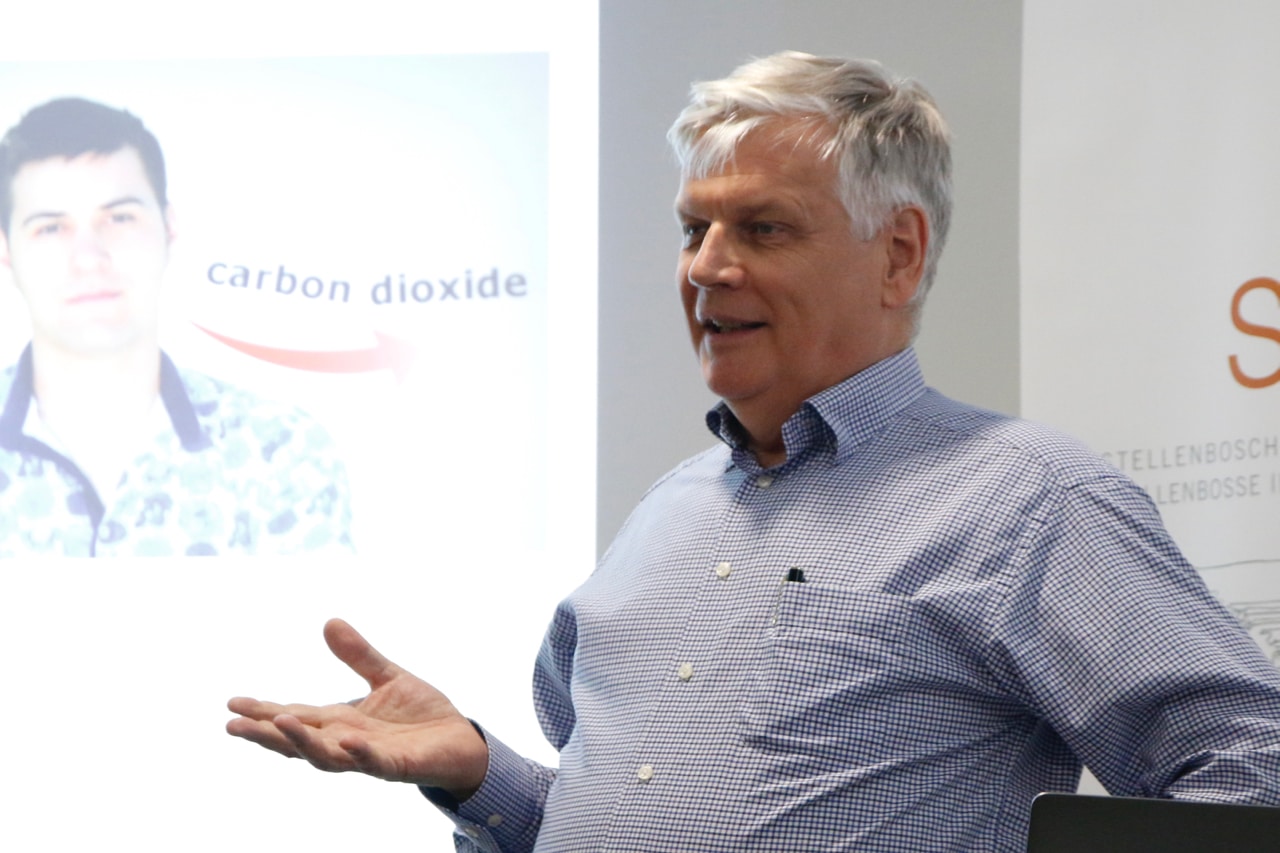“We are exploring the role of mitochondria in cancer metabolism, with the aim of developing new concepts for treating cancer by manipulation of mitochondria,” said STIAS fellow Nils-Göran Larsson of the Department of Medical Biochemistry and Biophysics at the Karolinska Institutet.

According to Larsson, cancer is one of the leading causes of death globally, and to reduce this societal and economic burden new treatment options are needed. Cancer cells show a reprogramming of metabolism compared to normal resting cells, since they are optimised for enhanced growth.
“Cancer cells need mitochondrial function to sustain growth and so-called cancer stem cells have been reported to be especially sensitive to mitochondrial dysfunction. Inhibition of mitochondrial function can therefore be a powerful method to treat cancer.”
Mitochondria are small units in the cell that play a central role in regulating metabolism. Larsson explained that the mitochondria are basically the power plants of the body involved in converting the food we ingest to a common energy currency – adenosine triphosphate or ATP. “We use 5 – 10 x 1020 molecules of ATP per second or 50 – 80 kg per day – basically our own body weight. ATP is continually produced and consumed.”
“The mechanism responsible for this energy conversion has been a classical problem in biology and today we know that the mitochondria are of key importance.”
“Mitochondria are originally derived from bacteria and consume most of the oxygen we breathe during the energy-conversion process. They also contain their own genetic material, mitochondrial DNA (mtDNA), which we only inherit from our mothers. In the early 1960s Margit Nass unexpectedly showed that there was DNA in mitochondria.”
In his presentation Larsson traced the historical scientific development of our understanding of mitochondria and their role in human physiology and disease. He highlighted the work of Scheele, Priestley, de Lavoisier, Altmann, Mitchell and Palade all of whom made important major steps in enhancing our understanding as well as Otto Warburg who “first proposed that cancer may be caused by faulty metabolism”.
Mitochondrial dysfunction is linked to both rare genetic diseases plus more common diseases associated with ageing – like heart disease, cancer, diabetes and Alzheimer’s disease, and Larsson and his colleagues are investigating several different aspects of mitochondrial dysfunction.
“Mitochondrial dysfunction can be the primary cause of disease,” said Larsson, “and it is important in progression of common age-associated diseases.”
“In our work on the genetic diseases, the goal is to find the responsible causative genetic mutation – which may be present in the mtDNA or in the nuclear genes. The diagnostic process involves doing a muscle biopsy for isolation of mitochondria to measure mitochondrial function. Also light and electron microscope studies of muscle tissue are important components of the diagnostic procedure.”
“Importantly, next-generation DNA sequencing allows us to sequence the whole genome of the patients – this does not only lead to the identification of known disease genes but sometimes we stumble on new genes that can tell a lot about mitochondrial function.”
“As many of these diseases have no treatments, people might ask why we bother to diagnose when you can’t treat? However, proper diagnosis is very important for the patients and their families, and can also allow prenatal diagnosis. Insight into molecular disease mechanisms will also allow us to develop new strategies for treatment.”
“To facilitate our studies of the role of mtDNA in disease and ageing we have developed several mouse models that can be used to test different new treatments.”
“Humans have always had a preoccupation with understanding why we are dying,” he continued. “Mitochondrial dysfunction likely contributes to ageing in humans, but no single mechanism can alone explain ageing. The human lifespan has doubled since the mid-1800s and the median lifespan continues to rise. In contrast the maximum human lifespan has not increased (currently the longest documented human lifespan is 122 years.) The marked increase in median life span is probably mainly explained by hygiene, protected environments, better food and healthcare.”
“My STIAS project specifically involves looking at the role of mtDNA in cancer. Cancer is not initiated by damage to mtDNA but mitochondrial function is essential for the cancer cells to grow,” he said.
“We are trying to understand how mitochondrial function is altered in cells that proliferate in comparison with quiescent cells. We know that different cells in different parts of the body have vastly different rates of proliferation – for example, colon and bone-marrow cells show extremely rapid proliferation while some brain neurons are present without dividing for many decades. Cancer cells must adapt mitochondrial function to be able to grow. We have results showing that the inhibition of mitochondrial activity can stop the proliferation of certain tumour cells, and this might offer a treatment for cancer – in other words we propose using manipulation of mitochondrial metabolism as a way to treat cancers.”
“Experiments in cell and animal models from other groups have shown that treatment of leukemia with an antibiotic that inhibits mitochondrial function in combination with established cancer drugs has synergistic effects. My group and collaborators have developed a putative cancer drug based on manipulation of mitochondria, which has been licensed to a biotechnology company for further development and phase I clinical trials.”
In discussion, he answered several questions about the role of mitochondria. He also commented on the concept of human exceptionalism.
“There are no higher or lower organisms. Humans are just one branch of the tree of evolution – they are not a more important life form than the other branches.”
Michelle Galloway: Part-time media officer at STIAS
Photograph: Christoff Pauw
